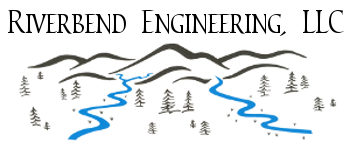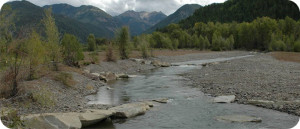 At Riverbend we are passionate about rivers, and we recognize their importance in the semi-arid environment of the American West. Rivers and their occasional companion the wetland are limited resources that many living things depend on. Most river projects begin with a specific goal in mind: an eroding streambank, an abandoned headgate, a poor fishery, a watershed suffering from forest fire. Riverbend can design and construct solutions to these problems. At the same time we are looking at a wide range of habitat and vegetation conditions in and around the river, and we are thinking of ways to improve overall ecosystem health at the reach scale. It is Riverbend’s ethic to promote the health of the river and its dependent surroundings whenever we can. We won’t design projects that improve one river function at the expense of another. This doesn’t mean a project will cost a lot more, but it does mean that the subtle details of design must be achieved in the construction effort. Details do matter.
At Riverbend we are passionate about rivers, and we recognize their importance in the semi-arid environment of the American West. Rivers and their occasional companion the wetland are limited resources that many living things depend on. Most river projects begin with a specific goal in mind: an eroding streambank, an abandoned headgate, a poor fishery, a watershed suffering from forest fire. Riverbend can design and construct solutions to these problems. At the same time we are looking at a wide range of habitat and vegetation conditions in and around the river, and we are thinking of ways to improve overall ecosystem health at the reach scale. It is Riverbend’s ethic to promote the health of the river and its dependent surroundings whenever we can. We won’t design projects that improve one river function at the expense of another. This doesn’t mean a project will cost a lot more, but it does mean that the subtle details of design must be achieved in the construction effort. Details do matter.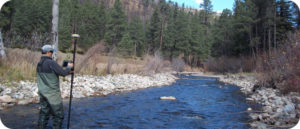
At the beginning of every project we perform a thorough assessment of current conditions. This includes field assessments of river channel geometry, aquatic habitat and riparian vegetation conditions. This can be as informal as a site walk with a camera, or it could be a study report with extensive data collection that follows a standard protocol. Each project will dictate the appropriate level of effort. Riverbend also wants to understand the watershed that produces a river, as well as the overlying constraints of water rights, property boundaries and FEMA maps that impact a particular location. We look for opportunities and constraints at every site. And we listen carefully to each client’s goals for the project.
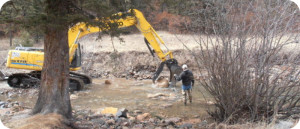 Responsible river engineering means that we must always try to maintain or restore the natural balance of the river. When conditions are right, a healthy river will sustain its pattern and geometric form through periods of drought and flood. Riverbend uses the science of fluvial geomorphology to understand what the self-sustaining form of a river should be, and we design all project elements to help the river regain or sustain that state of dynamic equilibrium. We recognize that complete restoration to a natural condition is not possible in many locations. But there is almost always a practical solution that “does no harm” the river.
Responsible river engineering means that we must always try to maintain or restore the natural balance of the river. When conditions are right, a healthy river will sustain its pattern and geometric form through periods of drought and flood. Riverbend uses the science of fluvial geomorphology to understand what the self-sustaining form of a river should be, and we design all project elements to help the river regain or sustain that state of dynamic equilibrium. We recognize that complete restoration to a natural condition is not possible in many locations. But there is almost always a practical solution that “does no harm” the river.
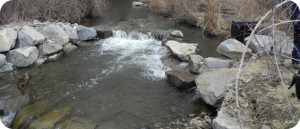 For Riverbend, it is important to find the right solution at each location, rather than applying a pre-determined paradigm. Our design “toolbox” includes a wide range of traditional river engineering techniques, as well as many alternative river restoration methods. We will always recommend solutions that are appropriate for a particular location. Willow plantings alone may not be appropriate to protect a building from the approach of an eroding streambank, but a reinforced concrete wall may be overkill. When a sanitary sewer line crosses a river the consequences of a pipe rupture are far worse than the placement of concrete to encase that pipe or the installation of a protective outer pipe sleeve. A low-head concrete dam may not be appropriate for an irrigation diversion project if it creates a barrier to fish migration or a hydraulic entrapment feature for boaters. Riverbend’s experience and understanding of many different techniques allows us to recommend solutions that are appropriate for each situation.
For Riverbend, it is important to find the right solution at each location, rather than applying a pre-determined paradigm. Our design “toolbox” includes a wide range of traditional river engineering techniques, as well as many alternative river restoration methods. We will always recommend solutions that are appropriate for a particular location. Willow plantings alone may not be appropriate to protect a building from the approach of an eroding streambank, but a reinforced concrete wall may be overkill. When a sanitary sewer line crosses a river the consequences of a pipe rupture are far worse than the placement of concrete to encase that pipe or the installation of a protective outer pipe sleeve. A low-head concrete dam may not be appropriate for an irrigation diversion project if it creates a barrier to fish migration or a hydraulic entrapment feature for boaters. Riverbend’s experience and understanding of many different techniques allows us to recommend solutions that are appropriate for each situation.
